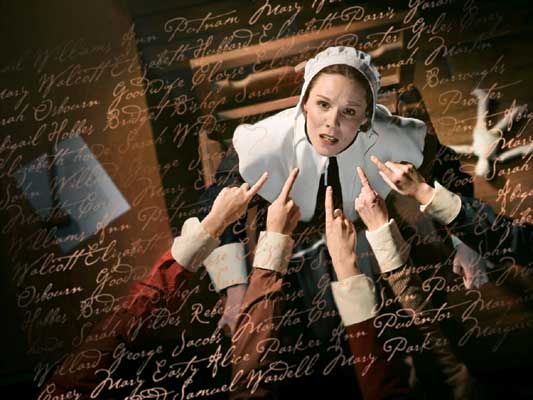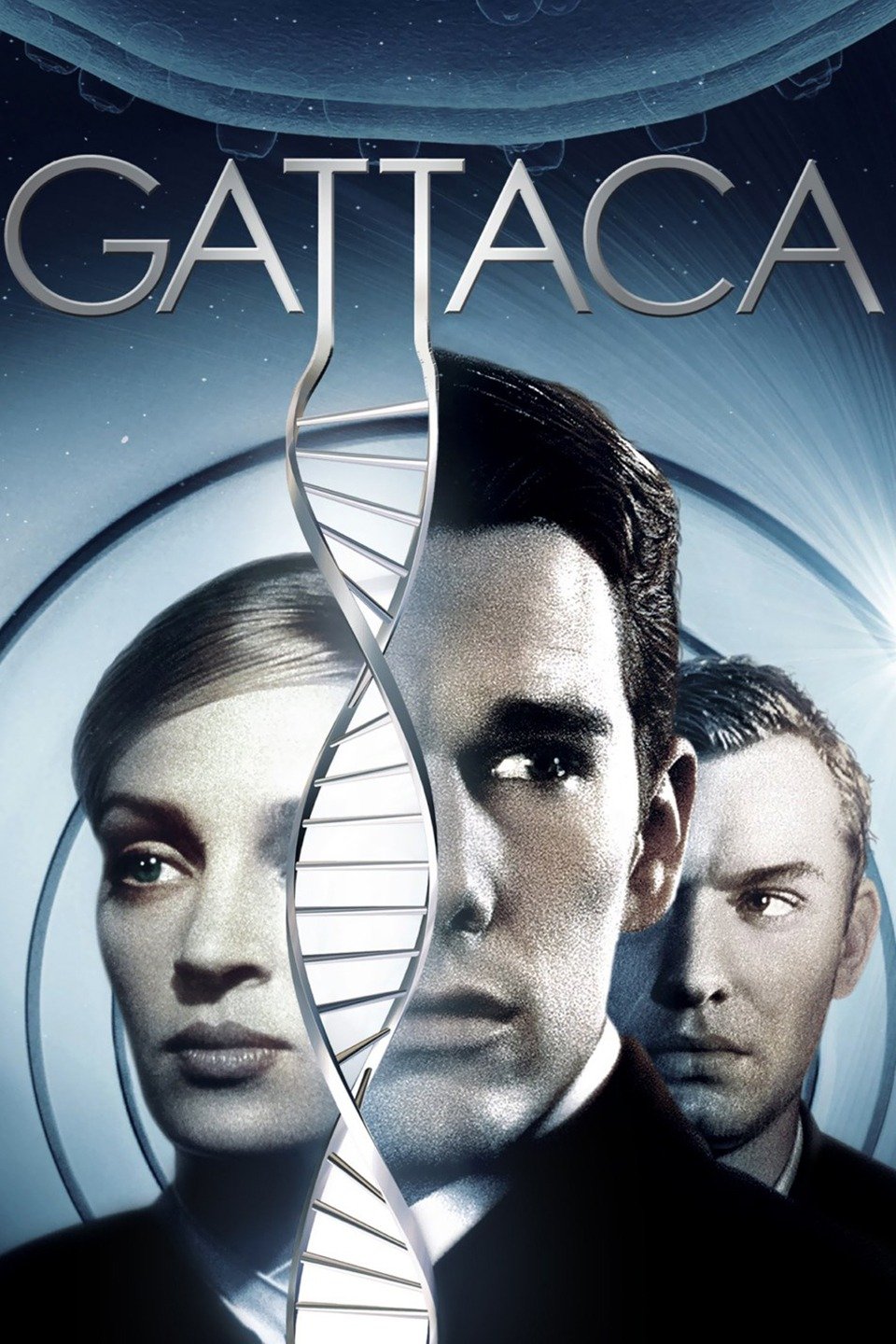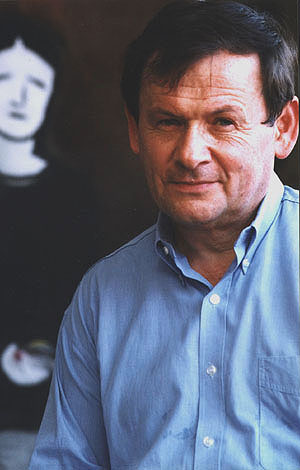
This resource is for Mainstream English students studying the play ‘The Crucible’ in the Victorian Curriculum for Years 11 & 12
Theme of Fear & Mass Hysteria
An important theme is that of fear and mass hysteria which leads to extreme acts in the play as the human inclination to ascribe blame for pain and suffering to others and then destroy the supposedly guilty party surfaces. In Salem the witch trials are a clear example of mass hysteria, with residents engulfed in a frenzy of accusations.
Context of Fear & Mass Hysteria in Salem
In ‘The Crucible’ Salem is a strict religious community where superstition is rife and scientific explanations minimal. In the puritanical colony of Massachusetts, reading books other than the Bible was forbidden, hence any scientific thinking was unlikely.
Mass hysteria and mob violence can infect the collective consciousness when fear, ignorance and isolation are not countered with universal education. In Salem, personal vengeance, paranoia and fear, rather than grief and illness, is what escalates the social panic.
Miller writes that because ‘it is impossible for most men to conceive of a morality without sin’ Salem, and analogously his own 1950’s zeitgeist, was ‘gripped between two diametrically opposed absolutes.’ Such binary thinking and absolutism is another catalyst for mass panic or mob violence.
The society in Salem is spurred on to collective hysteria by a dualistic belief that things they don’t understand or can’t explain must be ‘evil’. Satan, when referred to in the Bible, is thought of as the evil one, the tempter, the wicked one. To the people of Salem, the Devil is the adversary of God and an invisible threat. But Miller’s audience sees that it is the villagers’ own inner demons that bubble to the surface and wreak havoc on the town, combined with their irrationality.
Martha Corey has done nothing particularly adversarial, she merely reads books that are not approved of by her neighbours, but she finds herself charged as a witch.
The end of Act One and Act Three of the play show just how infectious a group mentality can be. Close study of Miller’s acting directions in these two sections of the play reveals the range of causes for such a frenzy; whether that be characters offloading their own shame and resentment, or being so fearful of punishment that they will say anything to avoid it.
Briefly What is Causing Fear in The Crucible?
- In ‘The Crucible’ Abigail and the group of girls spark fear in the town after being accused of engaging in sacrilegious activities while playing in the forest
- The people in Salem are convinced that the Devil has arrived and must be driven from his conspirators
- What begins with a handful of girls dancing in the forest manifests within eight days into a society whose feverish desire to rid itself of an unseen evil allows the suspending of human decency
- Unfortunately fear leads to a rapidly growing series of accusations against various members of the community
- Innocent people are labelled witches and forced to confess or suffer death
What does Miller Believe about the Spread of Fear?
- Miller presents the witch hunt then as a consequence of the hysterical fear that grips citizens when faced with social and religious upheaval
- Miller seeks not only to explore the evolution of mass hysteria but additionally to delve into what causes individuals to abandon personal loyalties in such times
- Even justice and reason are sacrificed and religion, which should provide a moral and ethical blueprint, is used to fuel the emerging fear and hysteria
- The theocratic society in Salem and the power of the state is under threat as individuals begin to question entrenched conservative, Puritan religious values
- Miller explains this as a paradox as individuals seek greater freedom they become a threat to the religious and political status quo
Arthur Miller was interviewed about why he wrote ‘The Crucible’and his thoughts about fear, hysteria and the threat of the Devil in Salem. See Arthur Miller’s views:
Fear Motivates People to Behave Unscrupulously in The Crucible
As Miller comments (on page 17 of the play in his notes before Act One), that “Old scores could be settled on a plane of heavenly combat between Lucifer and the Lord”.
- Personal fears instigate some characters to cry witch
- Reverend Parris fears losing his job provokes him to cry witch and if Abigail is exposed as the fraud she is he will be punished for supporting an illegitimate court procedure
- Parris also fears that the rebellion in Andover about the hangings will occur similarly in Salem
- Abigail uses fear of consorting with the Devil in her motives of vengeance against Elizabeth Proctor to accuse her of witchcraft
- The group of girls do what Abigail says for fear of getting caught so deflecting blame away from themselves is their only option
- The Putnams use fear and the hysteria of the accusations for self interest in acquiring land from those about to hang
- Deputy Governor Danforth uses the fear as a reason for his agenda to protect his reputation, the court and the theocracy it serves
Mob Mentality, Punitive Justice & Binary Thinking
‘The Crucible’ is a legal drama. An entire scene takes place in the Salem meeting house which is now Judge Danforth’s court, but every scene in the play is concerned with the process of arriving at a legal judgement. Because the play is an analogy for Senator McCarthy’s HUAC hearings, the audience is positioned to regard the justice system of Salem as being similarly flawed and equally ideologically motivated. Justice is not delivered by this legal system.
Indeed, the audience is led to the conclusion that the most dangerous person in the play is Judge Danforth. His lack of mercy, his willingness to believe evidence that has no proof, and his preoccupation with his own reputation, all serve to remind Miller’s audience that justice denied anywhere diminishes justice everywhere.
In ‘The Crucible’, Elizabeth humbly tells her husband that she cannot judge him; ‘The magistrate sits in your heart that judges you. I never thought you but a good man, John’ (p. 55). Elizabeth believes in the supremacy of the individual’s conscience, of his own accountability for decisions and actions. Miller shows that only when John Proctor explores the depths of his own guilt can he begin the redemptive process.
At the end of the play he dies on his own terms and sees ‘some shred of goodness’ in his decision. Proctor does not fear death because he has made his peace with himself and is free from self-admonition. His death is a great injustice, but the courage and moral conviction he shows is his legacy and his epitaph.








 For year 12 students studying Mainstream English AOS1 Unit 3: Reading and Creating Texts, either as an Analytical Interpretation or as a Creative Response, you will be analysing and writing essays based on Peter Skrzynecki’s poetry from his Old / New World Poetry Collection.
For year 12 students studying Mainstream English AOS1 Unit 3: Reading and Creating Texts, either as an Analytical Interpretation or as a Creative Response, you will be analysing and writing essays based on Peter Skrzynecki’s poetry from his Old / New World Poetry Collection.